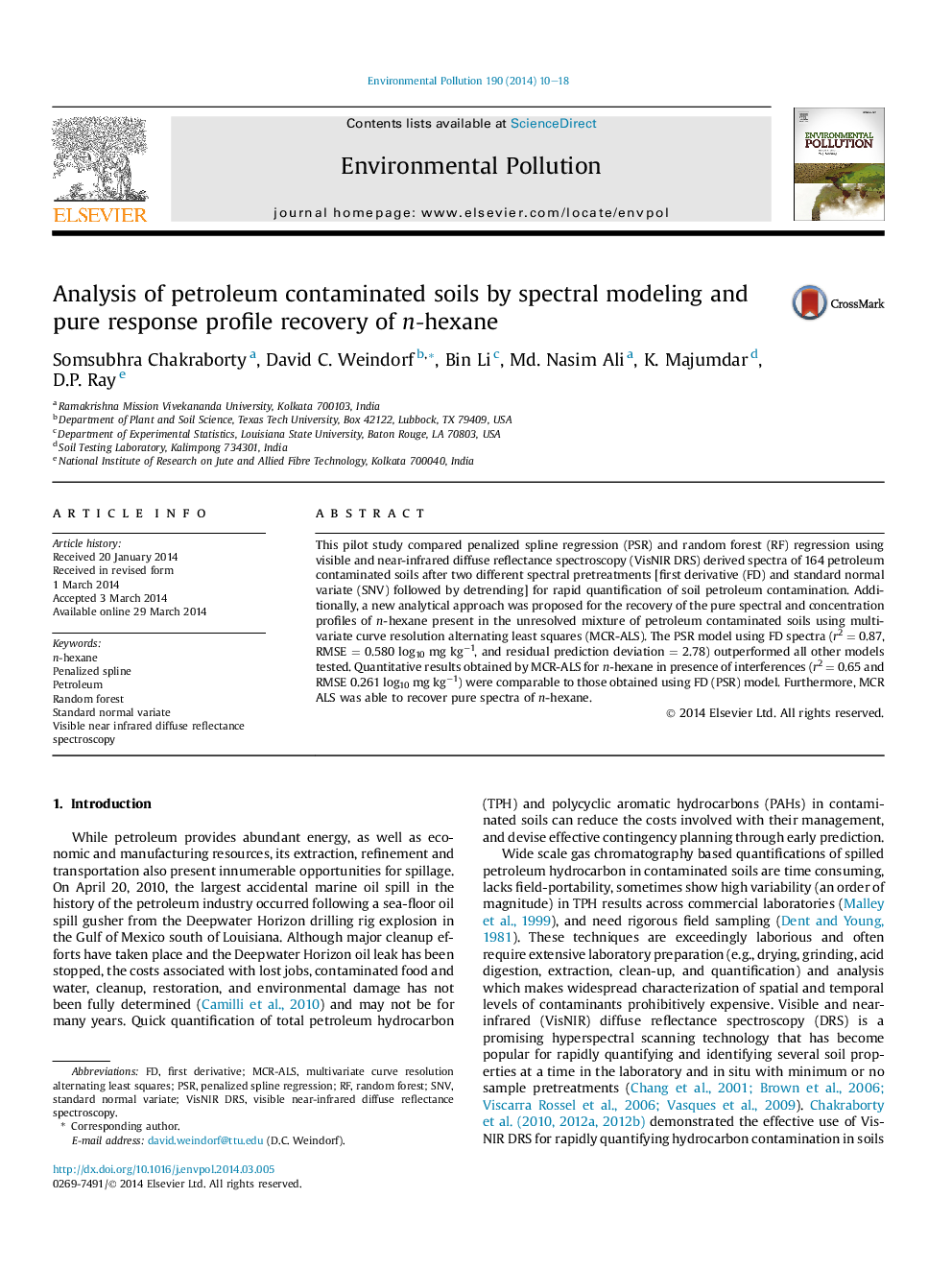| کد مقاله | کد نشریه | سال انتشار | مقاله انگلیسی | نسخه تمام متن |
|---|---|---|---|---|
| 4424307 | 1619182 | 2014 | 9 صفحه PDF | دانلود رایگان |

• We predicted soil petroleum contamination with VisNIR DRS spectra.
• We examined 2 spectral pretreatments and 2 multivariate models.
• MCR-ALS was used for compositional and spectral resolution of n-hexane.
• Penalized spline regression performed best for quantifying soil TPH.
• MCR-ALS was promising for resolution of complex soil–petroleum mixture.
This pilot study compared penalized spline regression (PSR) and random forest (RF) regression using visible and near-infrared diffuse reflectance spectroscopy (VisNIR DRS) derived spectra of 164 petroleum contaminated soils after two different spectral pretreatments [first derivative (FD) and standard normal variate (SNV) followed by detrending] for rapid quantification of soil petroleum contamination. Additionally, a new analytical approach was proposed for the recovery of the pure spectral and concentration profiles of n-hexane present in the unresolved mixture of petroleum contaminated soils using multivariate curve resolution alternating least squares (MCR-ALS). The PSR model using FD spectra (r2 = 0.87, RMSE = 0.580 log10 mg kg−1, and residual prediction deviation = 2.78) outperformed all other models tested. Quantitative results obtained by MCR-ALS for n-hexane in presence of interferences (r2 = 0.65 and RMSE 0.261 log10 mg kg−1) were comparable to those obtained using FD (PSR) model. Furthermore, MCR ALS was able to recover pure spectra of n-hexane.
Journal: Environmental Pollution - Volume 190, July 2014, Pages 10–18